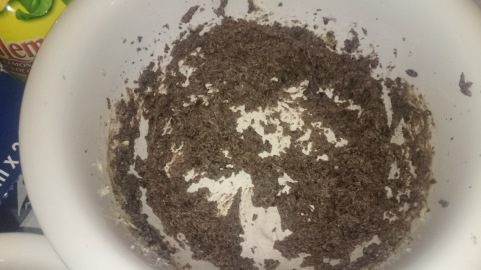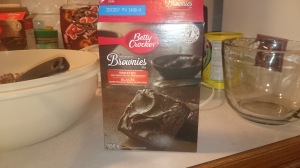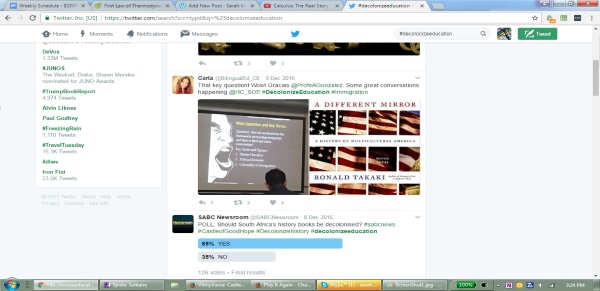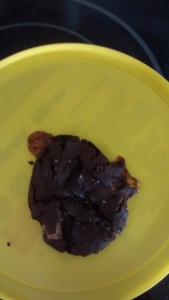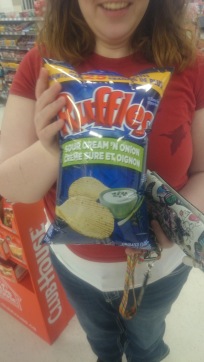So my birthday is in two days and anyone who knows me is aware that I like to celebrate my birthday for the entire week before and after the day because then I can boss my sister around and make her do stuff for me because “it’s my birthday”. It totally doesn’t work, for the record, but we’ll pretend it does.
I had my birthday party this year in Yorkton, as you do when you’re from Yorkton and it is the best place in the world, and you are totally not 22 so of course you need to have a birthday party where all you do is play Jackbox Games and Overcooked and horror D&D (which is not really D&D and my best friend gets mad at me when I call it that, but most people wouldn’t know what I was talking about if I said ‘we played Dread’).
Of course, when one is hosting a birthday party they must include food for said guests, including pumpernickel bread and that’s about it because I love pumpernickel bread more than my life. But I also decided I would try my hand at baking some goods for the party. Usually I just get an ice cream cake and call it that (I did that, too, but I also baked) but, seeing as I am learning to bake, I figured I may as well make some cupcakes.
So, on the day before the party, I sent my loyal minions, sister and friend who plays video game with us and totally cheats, to the store to buy me ingredients for cupcakes. I thought I would continue the trend I had and work on honing a single skill before moving on to more complex baking, so I asked for boxes of cake mix again. Vanilla and chocolate, as I decided I would learn to fill my cupcakes and have those “filled cupcake” things (turns out, spoiler alert, you don’t bake the cupcakes with the filling inside, so I kind of failed at honing my baking fillings thing, but I did learn a ton about baking, as you will soon see). They came back and said “so we bought three packages of cake mix. Because did you want vanilla or rainbow sprinkle batter, Sarah, we didn’t know so we bought both even though we know you LOVE rainbows so clearly there is a winner here”.
So I made 60 cupcakes.
I still have cupcakes and I made them on Saturday. So many cupcakes. I still have like, at least 15, if not 20. There were only 13 people at my house, what was I thinking, 60 cupcakes????
But that is neither here nor there. The point is, I made the cupcake batter, which was pretty easy. I did learn a bit about how to bake better cupcakes from The Food Network, which is also where I found my filling recipe. I didn’t use all of the tips, but I did learn about how the time you spend mixing is important, because you need to spend enough time to let air in and make the cake light and fluffy, but not too much or else it becomes tough.
I didn’t take any photos of the cupcake batter because that was the easy part. None of that caused me any issue, so I am a pro at box cake and brownies now!
Then came the fillings. I used the Food Network website to find my recipe, as I said, and I chose to make three different fillings that looked yummy and exciting – cookies and cream, cookie dough, and banana. This is where things go bad, worse, and then better.
So I followed the instructions on all three, the cookie dough, banana, and the cookies and cream. The cookie dough looked okay, but the banana was not doing the “make stiff peaks” thing that was in the instructions, and instead was just a sad, goopey mess.
And the cookies and cream just looked awful.
And I was like, I am not serving this to my people, they will laugh at me and I will be fired. FIRED.
And then I was like, time to quit, Sarah we are throwing in the towel, have a good day, don’t let the door hit you on the way out.
But as the mountains of cupcakes on my counter slowly got bigger and bigger, I was like wow, I have way too many cupcakes. But also, I was like I have so much free time, no one is getting here until five and it is 3:00. And then I was like Sarah, you can do this, be the Little Engine that Could and think you can….
So I tasted the fillings to see what was wrong with them.
The cookies and cream one tasted like butter cookies. I knew I needed more sugar. So, I added more confectioner’s sugar, but it’s a kind of short and sweet sweetness to that sugar, where it doesn’t feel like it permeates the baking so much as a flash in the pan it’s done sort of thing. So I also added some brown sugar because it was there, so why not?
It tasted way better after that. And looked better, although I don’t think you can quite tell in my photos I took.Then to the banana which just tasted like sour sadness. And I thought, what kind of dessert do I like that has banana in it? Maybe I can make it taste something like that? And you know what I like? Banana cream pie. I added more banana to overpower some of that sour taste, and I looked around my house for some kind of graham pie crust. And I looked all around my house and found corn flakes. And I was like, “Can’t get any worse”, so I crushed some of those up and added them in. And threw in more sugar for good measure.
That looks like a thing you’d kinda want to eat, maybe! Trust me, it had a much better flavour, so I was pleased.
Now, to wrap this up, I’ve been talking far too long, I made the cupcakes, decorated mine (everyone could decorate as they wanted) and the one I took a photo of had the cookie dough in it.
It was real good, so I count that as a success!
Next on the list for me is to make myself my birthday cake! I think I’m going to use a family recipe, so I will learn some baking tips from my family!
As for the math lesson, I am really very pleased that so far all of my learnings and failures in the project have coincided nicely with some mathematical thing I could see it being applicable for. With this project, I thought of how I had to adjust the quantities of things in the recipes, and sometimes add my own strange ingredients in order to make it taste just right. So I thought about linear inequalities with two variables.
Outcome: P20.9 Expand and demonstrate understanding of inequalities including:
- one-variable quadratic inequalities
- two-variable linear and quadratic inequalities.
And how, if I were to adjust a recipe to make sure it tasted the best, I need to make sure that I am still keeping it within the bounds of proper taste and structure (so you can’t just not have any banana in a banana recipe. What if you were to make a formula that included the base instructions for the ingredients you’d want to adjust (2 tbs of sugar=2s, 1tbs of salt=t) and you’d want to make sure your recipe stayed under however many tablespoons or something altogether. So like, you don’t want to have more than 20 tablespoons of either (2s+t ≤ 20).
Now, let’s be perfectly clear here. I don’t think students are going to learn much from this lesson. I don’t think this is the sure-fire way to help students understand inequalities with two variables. But I do think that this is somewhat of an extension of the first lesson I thought of, with adjusting ratios of one ingredient, now we’d be working with changing multiple ingredients, and completely messing up any ratios. I think at the end of the day, it’d teach students more about baking than math. But I think the lesson I’d want them to take away is that math also involves trial and error. Not all attempts are going to succeed, but we can try new things and keep throwing out suggestions, and maybe, even if we don’t come to the perfect answer, we’ll come up with something that leaves us more satisfied than when we started with a goopey mess.


